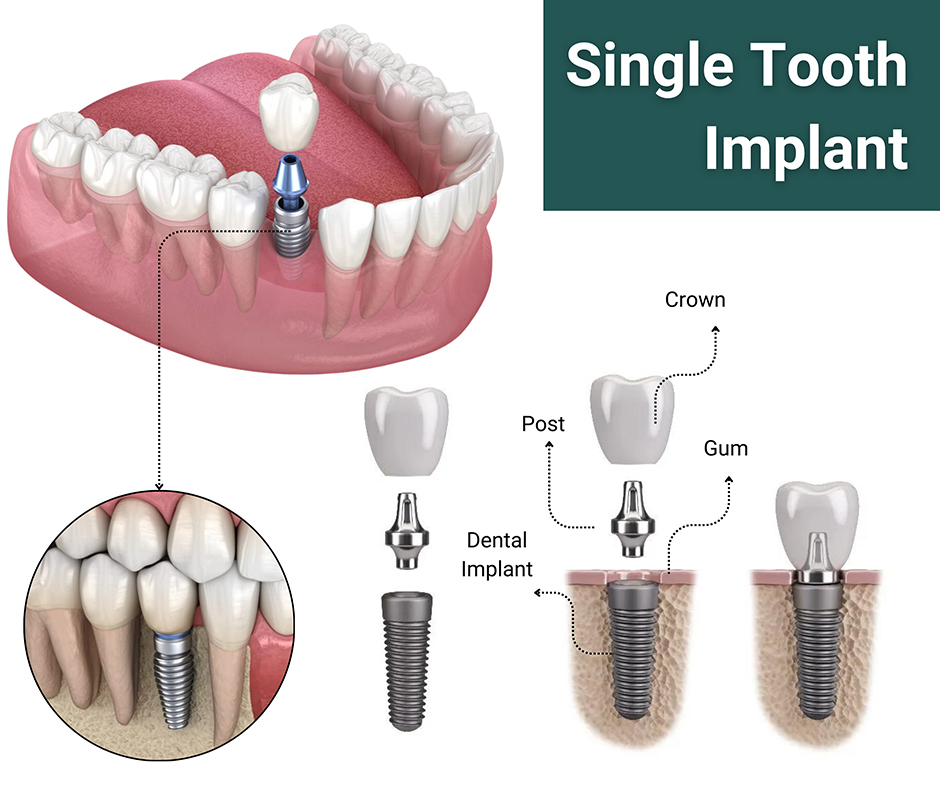Facts About Dental Implants Uncovered
Getting The Dental Implants To Work
Table of ContentsSome Of Dental ImplantsThe Only Guide for Dental ImplantsThe Single Strategy To Use For Dental ImplantsThe Of Dental Implants
are medical gadgets surgically dental implanted right into the jaw to bring back a person's capability to eat or their appearance. They supply support for artificial (fake) teeth, such as crowns, bridges, or dentures. When a tooth is shed as a result of injury or disease, a person can experience issues such as rapid bone loss, defective speech, or modifications to eating patterns that lead to pain.
Structure of The Dental Implant System picking dental implants, speak with your dental provider concerning the possible benefits and risks, and whether you are a prospect for the procedure. Things to take into consideration: Your total health is a crucial variable in establishing whether you are an excellent prospect for oral implants, for how long it will require to recover, and how much time the implant might remain in area.
Smoking cigarettes may affect the healing procedure and reduce the lasting success of the implant. The recovery process for the dental implant body may take a number of months or longer, throughout which time you commonly have a short-lived joint in area of the tooth. the oral implant treatment: Meticulously follow the oral health instructions offered to you by your oral provider.
An Unbiased View of Dental Implants
Implant failure can lead to the requirement for an additional operation to fix or change the dental implant system. Restores the capability to chew Restores cosmetic appearance Assists keep the jawbone from diminishing as a result of bone loss Preserves the health of the bordering bone and gum tissues Assists maintain adjacent (close-by) teeth stable Improves lifestyle Damage to bordering natural teeth throughout dental implant placement Injury to the surrounding tissues throughout surgery, such as sinus opening Injury during surgical procedure (for example, crack of bordering jawbone) Inadequate function, such as feeling like the teeth do not attack with each other normally A feeling that the tooth is loosened or twisting in position arising from a joint screw loosening up Implant body failure (looseness of the dental implant body) as a result of systemic infection, which might be more probable in individuals with uncontrolled diabetics issues as a result of local infection in bone and gum tissues supporting the dental implant body due to delayed recovery, which may be extra likely in individuals who smoke Problem cleaning the periodontals around the dental implant, causing inadequate oral health Untreated periodontal illness Post-surgical pins click this and needles due to nerve impingement or damage Constantly alert health and wellness treatment companies and imaging service technicians that you have dental implants before any magnetic vibration imaging (MRI) or x-ray treatments.
FDA is not knowledgeable about any kind of damaging occasions reported for MRI or x-ray treatments with oral implants. Dental implants systems are commonly constructed from products that comply with international consensus standards of the International Company for Standardization (ISO) or ASTM International. These standards have details of what makes a secure material.
Other materials such as gold alloys, cobalt-based alloys, titanium alloys, or ceramic materials are sometimes made use of. The safety profiles of these products are popular. Dental implant systems are reviewed according to global consensus criteria. Biocompatibility screening, to show that physical contact with the tool does not trigger problems like inflammation or allergic response, is part of the evaluation that assists ensure the products in the oral implant system are safe and do not trigger negative effects when implanted in people.

The 9-Second Trick For Dental Implants
Some people are not eligible for oral implant surgical procedure. It is for oral surgeons to operate on people with: acute illnessuncontrollable metabolic diseasebone or soft cells condition or infectionIf these problems are resolved, a person can have the surgical procedure. Dental Implants. In, oral surgeons abstain from running on people with: If individuals with any of the above undertake dental implant surgical procedure, there is a higher danger of the dental implant falling short
Some people have a jawbone irregularity that avoids sufficient bone for an implant from creating. In such instances, a surgeon may require to execute a ridge modification. This entails raising the gum tissue to expose the location of flawed bone. The cosmetic surgeon will then make use of a bone or bone alternative to fix and construct up the area.
Dental dental implant surgical procedure is an individualized process. Provide you time to recover. Connect the post and final crown, bridge or denture.
Next off, your surgeon will thoroughly put the oral implant right into your jaw. Your specialist will certainly reposition your periodontals and shut the laceration with stitches (Dental Implants). If your dental implant is near the front of your mouth, your dental professional will certainly make a temporary tooth for you to put on till you recover. That method, you won't have a space in your smile while you recoup.
Not known Factual Statements About Dental Implants
Your Resources provider can tell more you what to anticipate in your situation. Throughout the recovery phase, your jawbone should fuse to the dental implant. This procedure, called osseointegration, is important for stability and lasting success. This process can take anywhere from 3 to 9 months. Sometimes, it might take longer.
As soon as your dental implant heals, your dentist can attach the abutment (tiny port blog post) and your last remediation (crown, bridge or denture). This usually takes about one hour to finish and may call for a second small surgical procedure. You shouldn't feel any pain throughout your oral implant procedure because your service provider will use medicine to numb your periodontals.